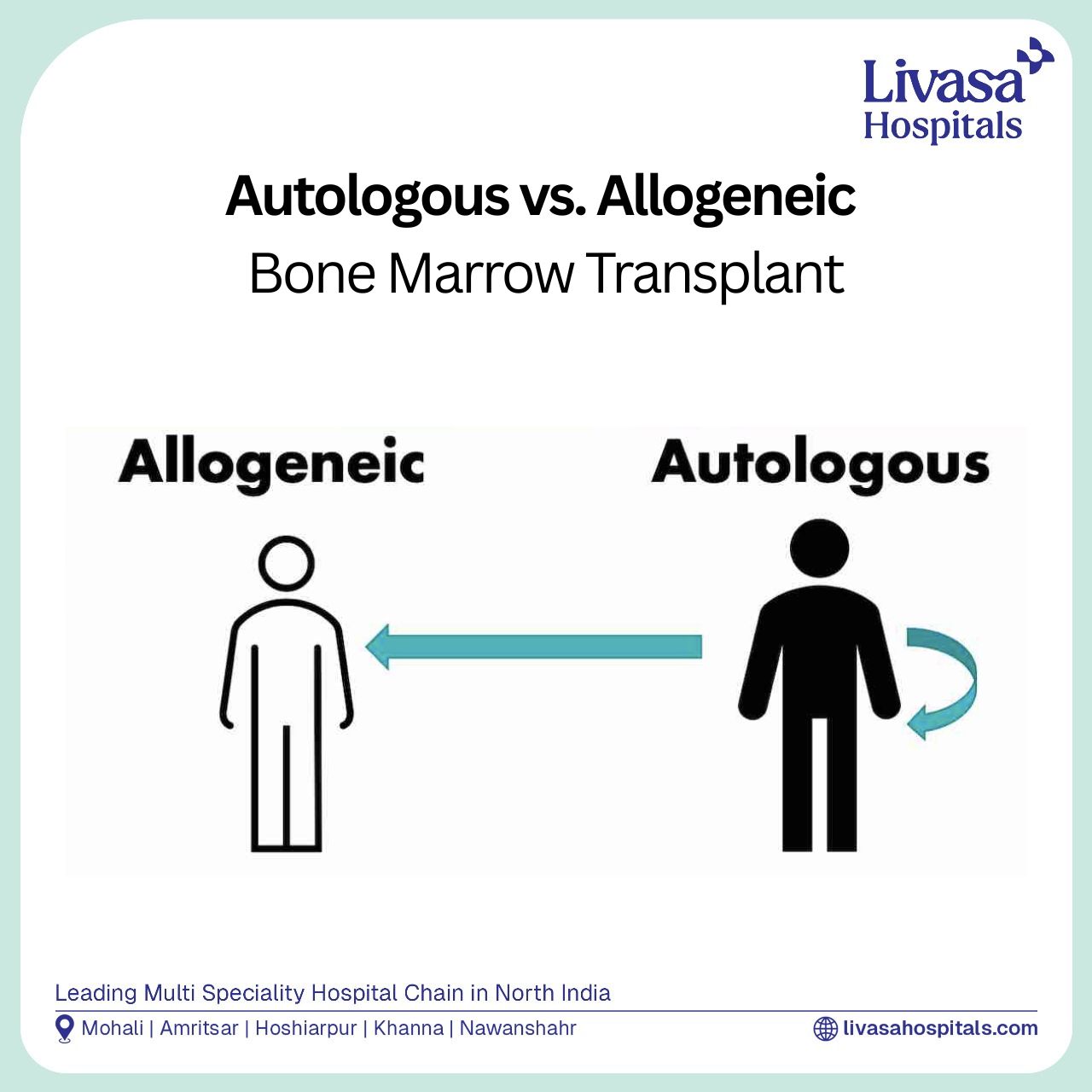19 Dec 2025
Age Specific Related to Psoriasis in Amritsar


Dr. Mukesh Chawla
22 May 2025
Call +91 80788 80788 to request an appointment.
The treatment landscape for patients with blood disorders or malignancies has significantly evolved over the past few decades, with bone marrow transplantation emerging as one of the most effective therapies. Two primary types of bone marrow transplants are autologous and allogeneic transplantation. Understanding the key differences between these two procedures is crucial for patients, families, and caregivers to make informed treatment decisions.
At Livasa Hospitals, with locations in Punjab including Mohali, Amritsar, Hoshiarpur, and Khanna, our oncology specialists are dedicated to offering the best solutions for patients who require these critical therapies. This blog will highlight the distinctions between autologous and allogeneic bone marrow transplants, their indications, benefits, and potential challenges faced by patients.
A bone marrow transplant is a medical procedure that involves the infusion of healthy bone marrow cells into a patient whose bone marrow is either damaged or destroyed due to various conditions, including cancer, blood disorders, or autoimmune diseases. The primary objective of this procedure is to restore the bone marrow’s ability to produce healthy blood cells.
There are two main types of bone marrow transplants:
An autologous bone marrow transplant (ABMT) is a procedure in which a patient's own stem cells are harvested from their bone marrow or blood before undergoing high-dose chemotherapy or radiation therapy. The collected stem cells are then frozen and stored until they are needed again.
Once the patient has completed their chemotherapy or radiation treatment, the stored stem cells are reinfused into their bloodstream, where they migrate back to the bone marrow and begin the process of generating new, healthy blood cells. This approach minimizes the risk of rejection, as the stem cells are the patient’s own.
ABMT is commonly used for cancers such as:
An allogeneic bone marrow transplant (ABMT) involves using stem cells from a healthy donor. The donor's stem cells are obtained either from the bone marrow or through peripheral blood stem cell collection. This type of transplant is usually recommended when a patient's own bone marrow cells are no longer healthy or functional.
Allogeneic transplants can be further classified based on the source of the donor:
This transplant type is often indicated for diseases such as:

Though both autologous and allogeneic bone marrow transplants aim to restore healthy blood cell production, they differ significantly in several aspects. A comparative overview is detailed in the table below:
| Characteristic | Autologous Transplant | Allogeneic Transplant |
|---|---|---|
| Source of Stem Cells | Patient's own body | Donor (relative or unrelated) |
| Risk of Rejection | Very low | Higher risk of graft-versus-host disease (GVHD) |
| Recovery Time | Shorter (generally 2-4 weeks) | Longer (can take months) |
| Eligibility | Suitable if patient’s own cells are healthy | Necessary for patients with severe blood conditions |
The choice between autologous and allogeneic transplants often depends on the underlying condition, the patient's overall health, and the specific goals of treatment. Each method has its unique benefits:
While both autologous and allogeneic transplants hold significant promise, they are not without challenges. Both procedures come with risks and complications that should be considered. Here are some factors to keep in mind:
One of the significant aspects of treatment is the financial aspect, and patients often seek clarity regarding costs. The cost of bone marrow transplants varies significantly based on regional healthcare costs, the type of transplant, and hospital facilities. In Punjab, the following estimates can be helpful:
Typically, an autologous transplant may cost anywhere from INR 10 lakhs to INR 25 lakhs, depending on hospital facilities, required pre-transplant treatments, and length of the hospital stay.
Conversely, an allogeneic transplant can be more expensive, with costs ranging from INR 20 lakhs to INR 50 lakhs, considering the need for donor matching, potential complications, and longer hospitalization periods.
Patients are encouraged to consult our oncology specialists at Livasa Hospitals for a detailed assessment and financial planning support tailored to their individual treatment journeys.
Choosing between an autologous and allogeneic bone marrow transplant is a significant decision laden with medical and emotional implications. It is essential for patients and their families to have a thorough understanding of both options, including the benefits, challenges, and financial considerations.
At Livasa Hospitals, we are committed to offering comprehensive support throughout this journey. Our team of bone marrow transplant specialists in Punjab is equipped with the knowledge and expertise necessary to provide appropriate care. If you are exploring treatment options and need guidance, contact us at +91 80788 80788 or book an appointment today.
Whether you're considering autologous stem cell transplant in Punjab or searching for the best oncology hospitals in Punjab, our dedicated team is here to assist you every step of the way. Don't hesitate to reach out for further information and support on your treatment journey.
+91 80788 80788
Livasa Healthcare Group Corporate Office,Phase-8, Industrial Area, Sector 73, Sahibzada Ajit Singh Nagar, Punjab 160071
livasacare@livasahospitals.in
| Mohali | +91-99888 23456 |
| Amritsar | +91-99887 49494 |
| Hoshiarpur | +91-99883 35353 |
| Nawanshahr | +91-75081 82337 |
| Khanna | +91-98888 05394 |